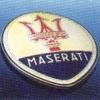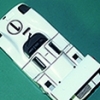I don’t profess to understand very much about the FIA/FIVA historic eligibility rules but I have been told by a Lola T 70 Mk1 owner that he can’t run a dry sump as only mk11 T 70's had that in period, despite the rule costing lost engines where the track has long bends like Monza.
So I was very puzzled when looking at the Brands Hatch entry list for this weekend to see all three "proper" Canam cars listed with 8,800 cc engines. They are a McLaren M8C from 1970, an M8F from 1972 and a March 717 from 1971.
Switching to cubic inch sizes 8,800 c is 537 cubic inches. There were two basic aluminium big blocks used in CanAm IIRC. The GM ZL-1 block used by Chapparal, and I think most other runners plus the special Reynolds linerless block used exclusively by McLaren. All the McLaren cars through the last M20 are quoted as running an engine never bigger than 509 c.i. engine. That is the classic 4.50 bore * 4.00 stroke GM set up. As the linerless blocks are very hard to overbore I don’t see how you can get 537 c.i. or where Mclaren ever used it.
On the ZL-1 block you can still get one and it lists the maximum bore as 4.30 inches and max crank stroke capacity of 4.375" which builds out to about 508 c.i.
There is no doubt you can have a big block built today at 8.8 litres , in fact 9.5 or 10.1 litres are easily available but they use the gen V block which post dated CanAm or special aftermarket blocks.
So, assuming the entry list isn't a typo how can you legally run 8.8 litres? I'm not for one second accusing the owners of doing anything wrong but I just don’t understand how the FIA/FIVA rules/passport system works.
Edited by mariner, 28 May 2016 - 08:58.






















